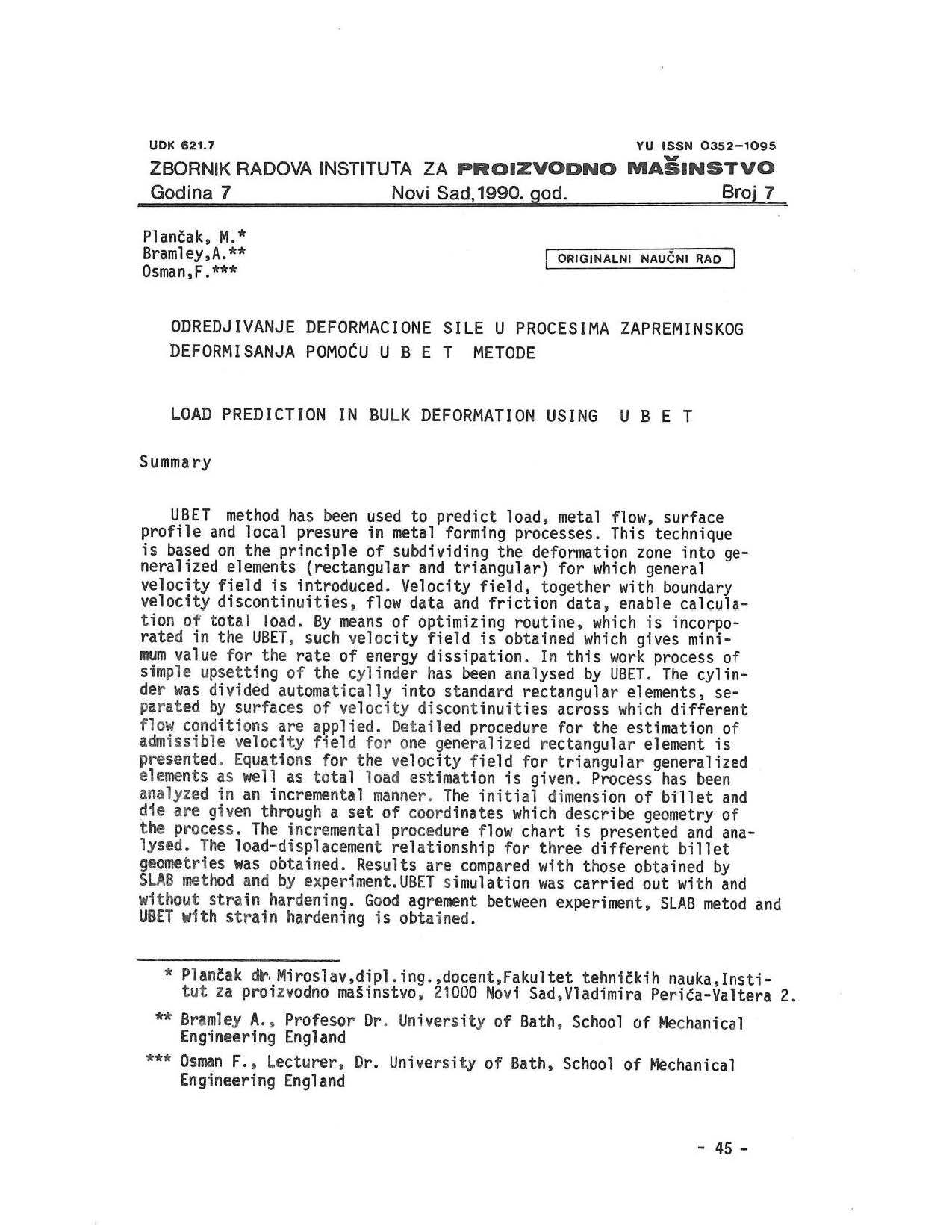
Published 1990-12-01
abstract views: 158 // FULL TEXT ARTICLE (PDF): 118
Keywords
- metal flow,
- surface profile,
- local pressure,
- metal forming
How to Cite
Copyright (c) 2023 Journal of Production Engineering

This work is licensed under a Creative Commons Attribution 4.0 International License.
Abstract
The UBET method has been employed to predict load, metal flow, surface profile, and local pressure in metal forming processes. This technique is based on the principle of dividing the deformation zone into generalized elements, including rectangular and triangular shapes, for which a general velocity field is introduced. This velocity field, along with boundary velocity discontinuities, flow data, and friction data, allows for the calculation of the total load. The UBET incorporates an optimization routine to obtain a velocity field that minimizes the rate of energy dissipation. In this study, we analyzed the process of simple upsetting of a cylinder using the UBET method. The cylinder was automatically divided into standard rectangular elements, separated by surfaces of velocity discontinuities across which different flow conditions are applied. We have provided a detailed procedure for estimating the permissible velocity field for one generalized rectangular element. Equations for the velocity field for triangular generalized elements and the estimation of the total load are also included. The process was analyzed incrementally. The initial dimensions of the billet and die are defined through a set of coordinates that describe the geometry of the process. A flowchart for the incremental procedure is presented and analyzed. We obtained the load-displacement relationship for three different billet geometries. The results are compared with those obtained using the SLAB method and experimental data. UBET simulations were conducted with and without strain hardening, and good agreement was achieved between the experiment, the SLAB method, and UBET with strain hardening.

